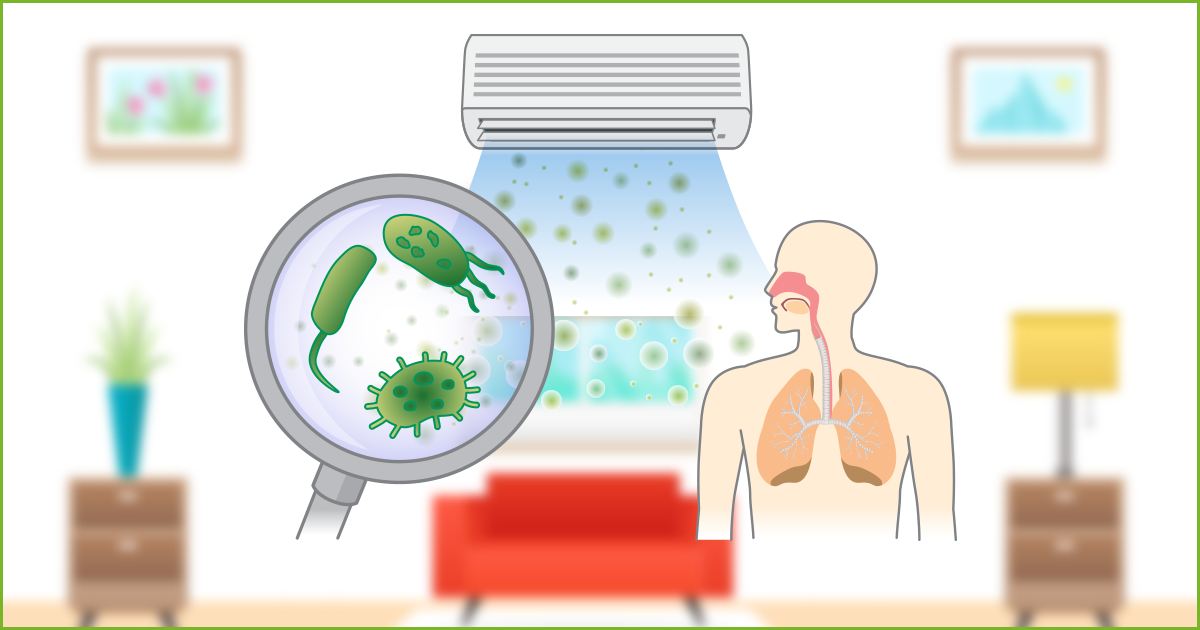What are the causes and effects of Indoor Air Pollution?

According to a recent survey conducted by WHO, indoor air pollution has affected and killed more than 4.3 million people every year.
Indoor Air Pollution refers to the physical, chemical, and biological characteristics of air in the indoor environment within a home, building, or an institution or commercial facility. The problems can be subtle and do not always create easily and immediately recognised impacts on health.
Here is an excerpt from a video interview of Dr Ravindra Nallagondla, HOD- Department of Pulmonology, OMNI Hospitals on causes and effects of Indoor Air Pollution and how it can be controlled using simple measures.
Q. How does Indoor Pollution affect a person with Asthma?
A. While indoors, a person encounters many high concentration chemical gases from substances like deodorants, mosquito repellants, burning incense and kitchen fumes which aggravate asthma.
Also, in marshy rooms, especially during the monsoon season, one might come in contact with fungi, sheddings of skin and fur or animals, cockroach droppings and dust mites which are also few main reasons that might trigger a person suffering from asthma.
Q. Will freon gas emitted by a refrigerator affect a person’s health?
A. Yes, definitely.
A refrigerator uses Chlorofluorocarbons (CFC’s) for the cooling effect. During the process of cooling, CFC’s emit toxic gases into the atmosphere including ground-level ozone which is responsible for irritating the respiratory tract. The immediate symptoms of an irritated respiratory tract are cold, cough and a stuffy nose.
Ozone (O3) is a layer present in the stratosphere and protects the earth from the sun’s harsh UV rays. But in the present age, due to our increased usage of advanced substances like deodorants, refrigerators etc., the ground level ozone is on a raise. This is not only causing the depletion of the Ozone Layer but also has serious health impacts on human beings.
Q. What are the measures one can take to protect themselves from Indoor Air Pollution at home?
A. One can take many measures while staying indoors to avoid being a victim of Indoor Air Pollution.
a. Kitchen-
Kitchens are the major causes of Indoor Air Pollution in one’s home, especially, in developing countries like India and Africa, the percentage of Indoor Air Pollution is the highest recorded, so far. In India, the usage of biomass fuel for cooking results in the release of toxic chemicals into the atmosphere which can cause lung diseases in the long run. It is also one of the major reasons for causing COPD in females in India.
While deep frying food substances, volatile organic compounds are produced from incompletely combusted materials which also affects the health of the person making the food. Thus, biomass fuels and deep frying of food can be avoided.
To ensure good air circulation in the kitchen and reduce smoke trapping, a chimney can be installed and the kitchen door can be left open.
b. Toilet-
Toilets are the second major causes of Indoor Air Pollution. Even as low as 0.05 BPM of sewer gas can cause dizziness and lung diseases if trapped in a bathroom for too long. Sewer gases contain high percentages of Hydrogen Sulphide and Ammonia which make it harmful for breathing.
Excessive use of air fresheners can also be another aggravating component to toxic atmospheric compounds.
A well-maintained bathroom and properly designed drainage systems can help solve the problem of trapped sewer gases.
Q. Is an air-filter installation necessary at home, keeping in mind the amount of dust in the atmosphere these days?
A. Yes. Air filters are a good measure by which Indoor Air Pollution can be controlled. Excessive dust causes Hypersensitivity in a person suffering from asthma or any other respiratory problem. In such cases, air filters can be installed at home.
Although, before buying an air filter proper research should be done to gauge the efficiency of the air filter. An Air filter that can make about 4-6 air changes per room per day can be considered as a good filter. A HEPA Air Filter is also very efficient.
Q. What to do when there are a lot of mosquitoes at home and it becomes inevitable to use a mosquito repellant/coil?
A. While burning a mosquito coil or spraying a mosquito repellant, most people close the door and windows of their homes. Soot and other toxic gases get trapped inside the house and breathing such toxic particulate matter for prolonged periods result in respiratory tract infections, asthma and many other health hazards.
Mosquito repellents don’t kill the mosquitoes but only act as a sedative. The best measure one can follow to avoid mosquitoes is by using mosquito nets.
Q. How does cooking contribute to Indoor Air Pollution?
A. Kitchens are the major causes of Indoor Air Pollution in one’s home, especially, in developing countries like India and Africa, the percentage of Indoor Air Pollution is the highest recorded, so far. In India, the usage of biomass fuel for cooking results in the release of toxic chemicals into the atmosphere which can cause lung diseases in the long run. It is also one of the major reasons for causing COPD in females in India.
While deep frying food substances, especially non-vegetarian foods, volatile organic compounds like nitrosamines are produced from incompletely combusted materials which also affects the health of the person making the food. Thus, biomass fuels and deep frying of food can be avoided.
To ensure good air circulation in the kitchen and reduce smoke trapping, a chimney can be installed and the kitchen door can be left open.
Q. What are the precautions to reduce dust allergy at home?
A. Below are a couple of precautions one can take to reduce the chances of contracting a dust allergy at home:
a. Use HEPA Vacuum cleaners to clean dust-deposition zones like mattresses, sofas, blankets etc.
b. Avoid having pets at home as their fur and saliva contains many particulate matters that triggers asthma.
c. Keep the doors and windows closed during spring and winter seasons.
d. Use HEPA air filters to filter the air at home.
e. Avoid marshy rooms as the spores of fungus and dust mites are also asthma triggering agents.
f. Instead of sweeping the room, use a wet mop.
Q. Can we use incense sticks at home?
A. Limit the usage of burning incense sticks at home as according to a recent study, one incense stick produces 40 mg of dust particles per litre of gas compared to a cigarette which produces 10 mg of dust particles per litre of gas. Aside from fragments of wood, incense sticks also produce other high concentration toxic gases into the air.
Q. What are the precautions one can take to avoid pneumonia?
A. Pneumonia is usually caused by micro-organisms like bacteria, virus and fungus. When these micro-organisms find their way into a person’s oropharynx, they start breeding, proliferating in number and block the airways. The precautions one can take to avoid pneumonia are:
a. Follow a good diet
b. Give the body enough rest
c. Keep a distance from people already suffering from pneumonia, cold, stuffy nose etc.
d. Practise regular exercises
e. Get regular vaccination done whenever there is an indication.
Q. How do we protect kids from Indoor Air Pollution?
A. Kids who are between 2-6 years of age, usually tend to stay on the floor most of the time and try to put everything into their mouths. Being vigilant and constantly monitoring them is the only way one can protect kids from Indoor Air Pollution.
Q. What are the precautions to take to protect oneself from Air Pollution when in traffic?
A. According to a study, a whole day in the traffic is equal to smoking 8-10 cigarettes per day. The precautions one can take to protect oneself from Air Pollution are:
a. Travel via public transport modes like metro and buses instead of using a bike.
b. Use a traffic mask with a good carbon filter to cover your nose and mouth while in traffic.
Q. How do indoor plants help in reducing Indoor Air Pollution?
A. Indoor plants are very efficient in absorbing the volatile organic compounds produced when a deodorant/air freshener is sprayed or food is deep-fried. Thus, having indoor plants is always a good idea to have at home.
In today’s day and age, with the increase in the number of chemical compounds and air-borne diseases, indoor air pollution has serious effects on one’s health. By following the precautions mentioned above, at home and in traffic, one can avoid the ill-effects of air pollution.

HOD – Dept. of Pulmonology, Sleep Medicine and Critical Care

